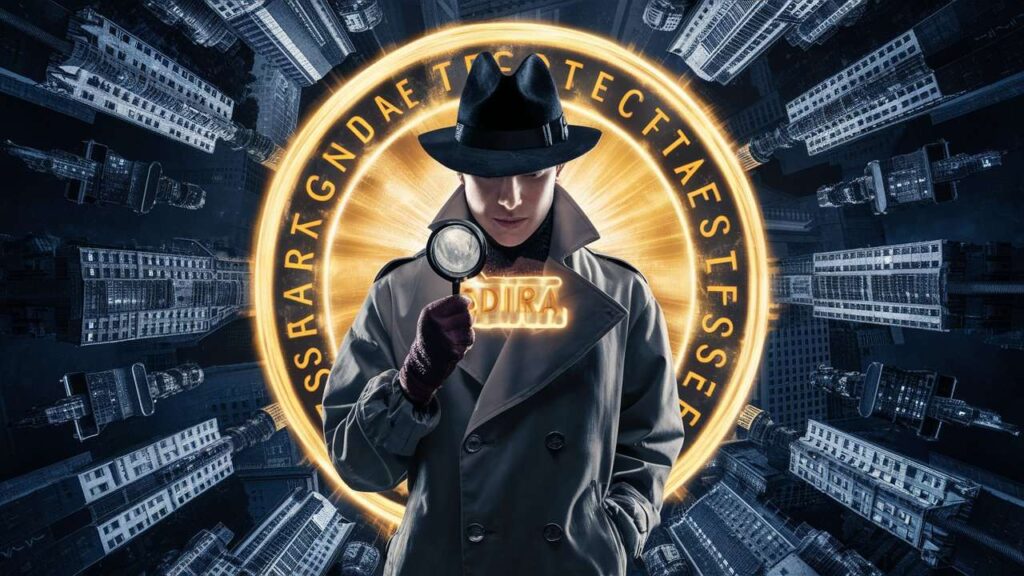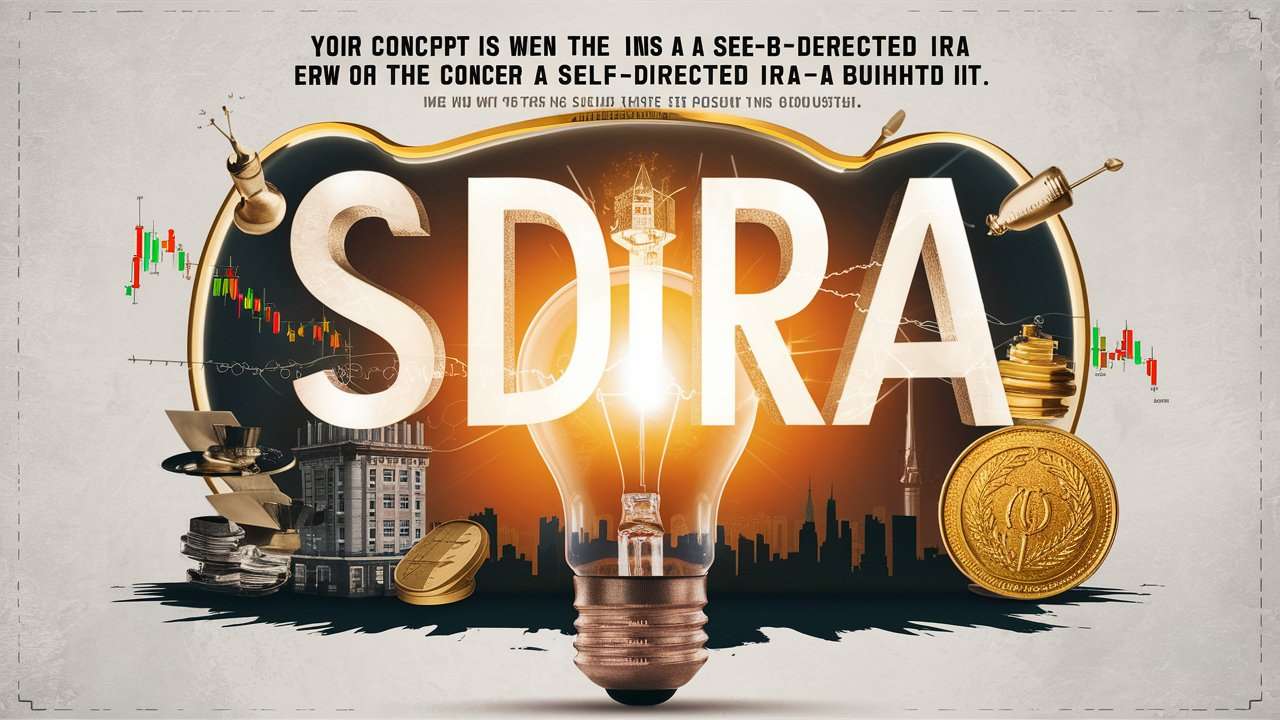The Mystery of SDIRAs Unveiled
Takin in the Hype Around Self-Directed IRAs
So, you’ve heard whispers about Self-Directed IRAs (SDIRAs) floating around like secret sauce for savvy investors. But what’s all the fuss about? Imagine having a retirement account that doesn’t just sit idly by but actively supports your investment dreams💰sounds magical, right? SDIRAs promise to give you that power, allowing you to be the maestro of your retirement symphony. It’s not just another financial product; it’s a gateway to a world where you call the shots.

Why This Smart Guide Will Be Your New Best Friend
Struggling to navigate the maze of SDIRAs? Fear not! This smart guide is your trusty map. It will illuminate the dark corners of Self-Directed IRAs with wit and wisdom. Whether you’re a seasoned investor or a newbie, this guide will demystify SDIRAs and arm you with the knowledge to turn your retirement savings into a well-oiled financial machine.
What Is a Self-Directed IRA (SDIRA)?
Defining SDIRA: More Than Just a Fancy Acronym
At its core, a Self-Directed IRA is exactly what it sounds like: an IRA where you, the investor, steer the ship. Unlike traditional IRAs, which limit your investment options to stocks, bonds, and mutual funds, an SDIRA opens up a treasure chest of alternative investments. From real estate to cryptocurrency, an SDIRA allows you to diversify your portfolio beyond conventional boundaries. It’s not just a fancy term; it’s a revolutionary approach to managing your retirement savings.
The Basics of How an SDIRA Works
Picture an SDIRA as a retirement account with a superpower💰it grants you the freedom to choose investments beyond the usual suspects. When you set up an SDIRA, you appoint a custodian to manage the paperwork and ensure compliance with IRS regulations. You then have the autonomy to direct your investments, making decisions that align with your financial goals. It’s like having a retirement account with a personal concierge service that caters to your every investment whim.

The Benefits of a Self-Directed IRA
Flexibility in Investment Choices: A Whole New World
With an SDIRA, the investment world is your oyster. 💰No longer confined to stocks and bonds, you can now venture into real estate, precious metals, or even emerging technologies like blockchain. The flexibility of SDIRAs means you can craft a portfolio that’s as unique as you are, tailoring your investments to match your risk tolerance and financial aspirations. It’s not just diversification; it’s diversification with style.
Tax Advantages: Why Uncle Sam Loves SDIRAs
Who doesn’t love tax benefits? SDIRAs come with attractive tax advantages, similar to traditional IRAs. Contributions may be tax-deductible, and earnings grow tax-deferred. Depending on your SDIRA type, you might even enjoy tax-free withdrawals. Essentially, an 💰SDIRA lets you keep more of your hard-earned money working for you, rather than funneling it to Uncle Sam.
Increased Control: You’re the Captain of Your Retirement Ship
Ever dreamt of being the captain of your own financial destiny? With an SDIRA, you get to be just that. You decide where to invest, how much to invest, and when to make changes. This increased control means you can align your retirement investments with your personal goals, passions, and expertise, making your retirement plan not just a safety net but a launchpad for your financial future.

Types of Investments You Can Make with an SDIRA
Real Estate: Buying Property with Your SDIRA
Real estate investing through an SDIRA can be both thrilling and profitable. Whether you’re eyeing rental properties, commercial real estate, or even raw land, an SDIRA allows you to purchase these assets within your retirement account. Just remember, the property needs to generate income for the SDIRA, not for you personally, until you start taking distributions.
Stocks and Bonds: The Traditional Investments Reimagined
While SDIRAs shine with alternative investments, they don’t forsake the classics. You can still invest in stocks and bonds, but with the added bonus of managing them within the framework of an SDIRA. This means you can potentially benefit from the same tax advantages while exploring a broader investment horizon.
Precious Metals: Gold, Silver, and the Alchemist’s Dream
Got a penchant for gold? SDIRAs allow you to invest in precious metals like gold, silver, platinum, and palladium. These tangible assets can be a hedge against inflation and market volatility. With your SDIRA, you can add a bit of alchemical flair to your retirement portfolio, transforming it into a golden nest egg.
Cryptocurrency: Investing in the Digital Gold Rush
Cryptocurrency is no longer just for tech-savvy millennials. With an SDIRA, you can dive into the digital gold rush by investing in Bitcoin, Ethereum, and other cryptocurrencies. It’s a bold move, but for those willing to navigate the volatility, it offers a chance to capitalize on the future of finance.
Alternative Assets: From Art to Startups
The world of alternative investments is vast. With an SDIRA, you can invest in things like artwork, collectibles, private startups, and more. It’s a playground for those with a keen eye for unconventional assets. Just make sure your investments are compliant with IRS rules and not deemed too risky for your retirement goals.

Setting Up Your Self-Directed IRA
Choosing the Right Custodian: Your SDIRA Wingman
The custodian is your SDIRA’s wingman, handling administrative tasks and ensuring compliance with regulations. Choose a custodian who offers expertise in SDIRAs and supports the type of investments you’re interested in. A good custodian will be your guide through the labyrinth of paperwork and regulatory requirements, making your SDIRA journey smoother.
The Setup Process: Paperwork and Pitfalls
Setting up an SDIRA involves some paperwork, but it’s manageable with the right guidance. You’ll need to fill out application forms, choose your investments, and fund the account. Beware of common pitfalls, like choosing the wrong custodian or misunderstanding the rules, which can derail your plans.
Funding Your SDIRA: How to Get the Ball Rolling
Funding your SDIRA can be done through transfers, rollovers, or contributions. Each method has its own set of rules and processes. Make sure you understand the differences to choose the best option for your situation and to ensure that your SDIRA is adequately funded from the start.
Rules and Regulations of SDIRAs
Contribution Limits: How Much Can You Really Put In?
Like all retirement accounts, SDIRAs have contribution limits. For 2024, the limit is $6,500 for individuals under 50 and $7,500 for those 50 and older. Adhering to these limits is crucial to avoid penalties and keep your SDIRA in good standing.
Distribution Rules: When and How to Access Your Funds
Accessing funds from your SDIRA comes with specific rules. Generally, you can start taking distributions at age 59½, but you must begin Required Minimum Distributions (RMDs) at age 73. Understanding these rules helps you plan your retirement withdrawals effectively and avoid early withdrawal penalties.
Prohibited Transactions: What You Absolutely Can’t Do
SDIRAs come with a list of prohibited transactions to prevent misuse. You cannot use the account for personal benefit or invest in certain assets like collectibles or life insurance. Violating these rules can result in penalties and disqualification of your SDIRA’s tax advantages.

Managing Your Self-Directed IRA
Keeping Track of Investments: Staying Organized
Managing an SDIRA requires diligent tracking of your investments. Keep detailed records of your transactions, valuations, and income generated. This will not only help you stay organized but also ensure compliance with IRS regulations.
Regular Monitoring: How to Keep Your SDIRA in Top Shape
Regular monitoring of your SDIRA’s performance is essential. Review your investments periodically, assess their performance, and make adjustments as needed. This proactive approach helps maintain a healthy portfolio and aligns with your long-term retirement goals.
Handling Required Minimum Distributions (RMDs)
Handling RMDs requires careful planning. Ensure you calculate the correct amount based on your account balance and age. Failing to take RMDs can result in hefty penalties, so it’s vital to stay on top of these requirements as you approach retirement age.
Common Mistakes to Avoid with SDIRAs
The Pitfalls of DIY Management: When to Seek Help
DIY management can be tempting but risky. Common mistakes include mishandling compliance or making uninformed investment decisions. Knowing when to seek professional help can save you from costly errors and ensure your SDIRA operates smoothly.
Misunderstanding IRS Rules: What Not to Do
Understanding IRS rules is crucial for SDIRA success. Missteps like investing in prohibited assets or failing to follow distribution rules can lead to severe consequences. Familiarize yourself with the regulations or consult with a knowledgeable advisor to avoid these pitfalls.
Overlooking Fees: The Hidden Costs of SDIRAs
SDIRAs come with various fees, from custodian fees to transaction costs. These fees can add up and impact your investment returns. Make sure you’re aware of all associated costs and factor them into your decision-making process to avoid unpleasant surprises.
Tax Implications and Reporting
Tax Benefits: How Your SDIRA Saves You Money
SDIRAs offer attractive tax benefits, including tax-deferred growth and potential tax-free withdrawals. Understanding these benefits helps you maximize your tax savings and make informed investment choices.
Reporting Requirements: What You Need to Know
Reporting requirements for SDIRAs include filing annual tax forms and keeping accurate records of your transactions. Staying on top of these requirements ensures compliance and helps you avoid penalties.
Handling Tax Issues: Common Problems and Solutions
Tax issues can arise with SDIRAs, such as incorrect reporting or misunderstandings about tax treatment. Being proactive and addressing issues promptly can prevent problems and ensure your SDIRA remains in good standing.
Comparing SDIRAs to Traditional IRAs
Traditional vs. Self-Directed: The Battle of Flexibility
Traditional IRAs and SDIRAs offer different advantages. While traditional IRAs provide a more straightforward investment approach, SDIRAs offer greater flexibility and control. Compare the two to determine which aligns best with your investment strategy and goals.
Pros and Cons: What Makes Each Unique
Each type of IRA has its pros and cons. Traditional IRAs are simpler but less flexible, while SDIRAs offer broader investment opportunities but require more management. Weigh these factors to decide which option suits your needs.
Which One Fits Your Investment Style?
Your investment style plays a crucial role in choosing between a traditional IRA and an SDIRA. If you prefer hands-on management and diverse investment options, an SDIRA might be your ideal choice. If you prefer a more passive approach, a traditional IRA might be a better fit.
Success Stories: How SDIRAs Changed the Game
Real-Life Wins: SDIRAs in Action
SDIRAs have transformed the financial futures of many investors. From real estate moguls to cryptocurrency enthusiasts, discover how people have leveraged SDIRAs to achieve impressive results and boost their retirement savings.
Inspiration for Your Own Investment Journey
Looking for inspiration? Real-life success stories can offer valuable insights and motivate you to explore the potential of SDIRAs. Learn from others’ experiences and apply their strategies to your own investment journey.

Getting Started with Your SDIRA
Steps to Open Your Account: A Practical Guide
Opening an SDIRA involves several key steps: choosing a custodian, completing paperwork, and funding the account. Follow this practical guide to set up your SDIRA efficiently and start investing with confidence.
Choosing Your Investments: Tips for Beginners
Selecting investments for your SDIRA can be daunting. Start with a clear investment strategy, research options thoroughly, and consider seeking advice from experts. These tips will help you make informed decisions and build a successful portfolio.
Avoiding Common Pitfalls: Best Practices for Success
Avoid common pitfalls by adhering to best practices, such as staying informed about IRS rules, managing fees effectively, and monitoring your investments regularly. These practices will help ensure your SDIRA remains a powerful tool for your retirement planning.

Conclusion: Your Roadmap to SDIRA Mastery
Recap of Key Points: What Have We Learned?
Let’s recap the essential takeaways from our journey through SDIRAs. From understanding the basics to setting up and managing your account, review the key points to solidify your knowledge and prepare for successful investment.
Final Tips: Making the Most of Your Self-Directed IRA
To make the most of your SDIRA , stay proactive, seek professional advice when needed, and continually educate yourself. These final tips will help you navigate the world of Self-Directed IRAs with confidence and achieve your financial goals.
People Also Ask
How much money can I put in a self-directed IRA?
The contribution limits for a Self-Directed IRA are the same as for traditional and Roth IRAs. For 2024, the annual limit is $6,500 for individuals under 50 and $7,500 for those 50 and older. These limits apply across all IRA accounts you own, so if you have multiple IRAs, the total contributions to all of them must not exceed these amounts.
What is the difference between a traditional IRA and a self-directed IRA?
A traditional IRA limits your investment choices to stocks, bonds, and mutual funds, typically managed by your financial institution. In contrast, a Self-Directed IRA offers a broader array of investment options, including real estate, precious metals, and cryptocurrencies. While both accounts have similar tax advantages, SDIRAs provide greater control and flexibility in managing your investments.
Can I cash out my self-directed IRA?
Yes, you can cash out your Self-Directed IRA, but doing so may have significant tax implications. Distributions are generally subject to income tax and, if taken before age 59½, may also incur a 10% early withdrawal penalty. It’s essential to understand these penalties and consider other options before deciding to cash out.
Do banks offer self-directed IRA?
While traditional banks may offer IRA accounts, they typically do not provide Self-Directed IRAs. SDIRAs are usually offered by specialized custodians or financial institutions that focus on alternative investments and have the expertise to handle these more complex accounts.
What are the disadvantages of an IRA account?
Some disadvantages of IRA accounts include limited contribution limits, required minimum distributions (RMDs) for traditional IRAs starting at age 73, and potential penalties for early withdrawals. Additionally, IRAs generally do not offer the same high contribution limits as employer-sponsored retirement plans like 401(k)s.
Can I borrow money from my self-directed IRA?
No, borrowing money from a Self-Directed IRA is prohibited. The IRS forbids loans or personal use of SDIRA funds, and attempting to do so can lead to penalties and tax consequences. All investments made with SDIRA funds must be strictly for the benefit of the account and its holder, not for personal use.
What is the penalty for a self-directed IRA?
Penalties for a Self-Directed IRA can include early withdrawal penalties of 10% if you take distributions before age 59½. Additionally, engaging in prohibited transactions or failing to adhere to IRS regulations can result in penalties and disqualification of your IRA’s tax benefits.
Who owns a self-directed IRA?
The owner of a Self-Directed IRA is the individual who established the account and retains control over the investment decisions. However, the account itself is held by a custodian who manages the administrative aspects and ensures compliance with IRS rules.
How much does it cost to set up a self-directed IRA?
The cost to set up a Self-Directed IRA varies by custodian but generally includes account setup fees, annual maintenance fees, and possibly transaction fees for buying or selling investments. Fees can range from a few hundred to over a thousand dollars annually, depending on the custodian and the complexity of your investments.
Is a self-directed IRA better than a 401k?
Whether a Self-Directed IRA is better than a 401(k) depends on your individual needs and investment goals. SDIRAs offer greater investment flexibility and control but have lower contribution limits compared to 401(k)s. Conversely, 401(k)s may offer higher contribution limits and potential employer matching. It’s crucial to weigh these factors based on your financial situation and retirement goals.
Is a self-directed IRA tax-free?
A Self-Directed IRA is not inherently tax-free. Like other IRAs, it benefits from tax-deferred growth, meaning you won’t pay taxes on earnings until you withdraw funds. Depending on the type of SDIRA (traditional or Roth), you may also benefit from tax-free withdrawals or tax-deductible contributions.
How to start a self-directed IRA?
To start a Self-Directed IRA, choose a reputable custodian specializing in SDIRAs, complete the necessary application forms, and fund your account through a transfer, rollover, or new contributions. Once your account is set up, you can direct investments according to your strategy and preferences.
How much can I put in my self-directed IRA?
Contribution limits for a Self-Directed IRA are the same as those for traditional and Roth IRAs. For 2024, you can contribute up to $6,500 annually if you’re under 50, or $7,500 if you’re 50 or older. These limits are cumulative across all IRA accounts you own.
Does a self-directed IRA earn interest?
A Self-Directed IRA itself does not earn interest. Instead, the investments you choose within the SDIRA can generate interest, dividends, or capital gains. The returns you earn depend on the performance of your chosen investments, such as real estate, stocks, or bonds.
What are cons of a self-directed IRA?
Cons of a Self-Directed IRA include complex regulations, the potential for higher fees, and the increased responsibility for managing and researching investments. Additionally, there’s a risk of making poor investment decisions or violating IRS rules, which can result in penalties and tax consequences.









